#asceticism
Text
Medieval Hermitage atop Katskhi Pillar, in Georgia (South Caucasus), c. 800-900 CE: this church was built during the Middle Ages; it sits atop a limestone column that has been venerated as a "Pillar of Life" for thousands of years
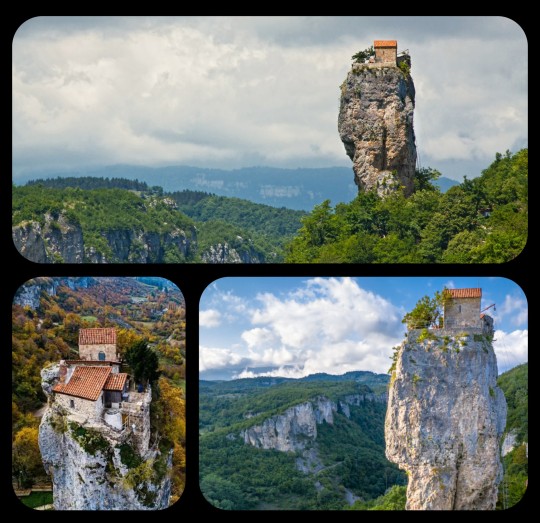
Known as Katskhi Pillar (or Katskhis Sveti), this enormous block of limestone is located in western Georgia, about 10km from the town of Chiatura.
The church that stands atop Katskhi Pillar was originally constructed during the 9th-10th century CE. It was long used as a hermitage for Stylites, who are sometimes referred to as "Pillar Saints" -- Christian ascetics who lived, prayed, and fasted atop pillars, often in total isolation, in an effort to bring themselves closer to God. This tradition originated in Syria during the 5th century CE, when a hermit known as Simeon the Elder purportedly climbed up onto a pillar and then stayed there for nearly 40 years, giving rise (no pun intended) to the Stylites. Stylitism managed to survive for about 1,000 years after its inception, but it gradually began to die out during the late Middle Ages, and by the end of the 16th century, it had essentially gone extinct.
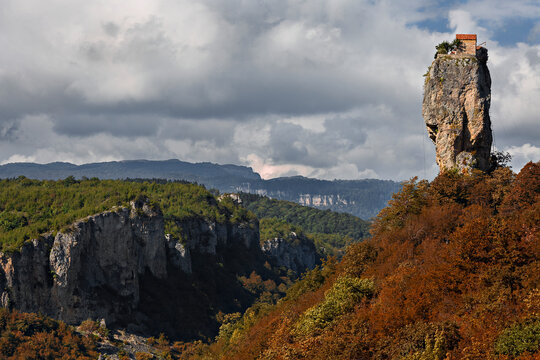
Researchers don't really know how the monks originally gained access to the top of Katskhi Pillar, or how they were able to transport their building materials up to the top of the column. There's evidence that the Stylites were still living at Katskhi Pillar up until the 15th century, but the site was then abandoned shortly thereafter. This was the same period in which Georgia came under Ottoman rule, though it's unclear whether or not that may have played a role in the abandonment of the site.
The hermitage continued to lay abandoned for nearly 500 years after that. No one had been able to gain access to the top of the pillar, and very little was even known about the ruins that lay scattered at the top, as knowledge about the site's origin/history was gradually lost. There are many local legends that emerged as a way to fill in those blanks.
The site was not visited again until July 29th, 1944, when a mountaineer finally ascended to the top of the column with a small team of researchers, and the group performed the first archaeological survey of the ruins. They found that the structure included three hermit cells, a chapel, a wine cellar, and a small crypt; within the crypt lay a single set of human remains, likely belonging to one of the monks who had inhabited the site during the Middle Ages.
A metal ladder (the "stairway to Heaven") was ultimately installed into the side of the pillar, making it much easier for both researchers and tourists to gain access to these ruins.

The hermitage at the top of Katskhi Pillar actually became active again in the early 1990's, when a small group of monks attempted to revive the Stylite tradition. A Georgian Orthodox monk named Maxime Qavtaradze then lived alone at the top of Katskhi Pillar for almost 20 years, beginning in 1995 and ending with his death in 2014. He is now buried at the base of the pillar.
While the hermitage is no longer accessible to the public, and it is currently uninhabited, it's still visited by local monks, who regularly climb up to the church in order to pray. There is also an active monastery complex at the base of the pillar, where a temple known as the Church of the Simeon Stylites is located.

The Church of the Simeon Stylites: this church is located within an active monastery complex that has been built at the base of the pillar; several frescoes and religious icons decorate the walls of the church, and a small shrine containing a 6th century cross is located in the center
There are many lingering questions about the history of Katskhi Pillar, particularly during the pre-Christian era. There is at least some evidence suggesting that it was once the site of votive offerings to pagan deities, as a series of pre-Christian idols have been found buried in the areas that surround the pillar; according to local tradition, the pillar itself was once venerated by the pagan societies that inhabited the area, but it's difficult to determine the extent to which these claims may simply be part of the mythos that surrounds Katskhi Pillar, particularly given its mysterious reputation.
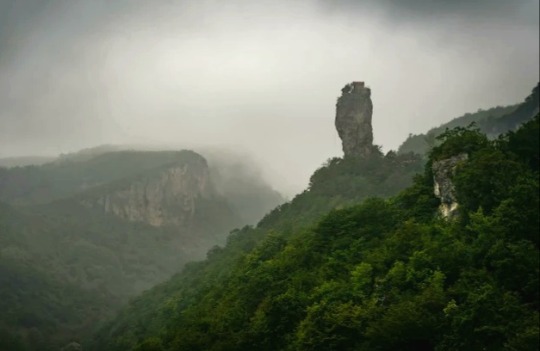
Sources & More Info:
BBC: Georgia's Daring, Death-Defying Pilgrimage
CNN: Katskhi Pillar, the Extraordinary Church where Daring Monks Climb Closer to God
Radio Free Europe: Georgian Monk Renews Tradition, Lives Atop Pillar
Architecture and Asceticism (Ch. 4): Stylitism as a Cultural Trend Between Syria and Georgia
Research Publication from the Georgian National Museum: Katskhi Pillar
Journal of Nomads: Katskhi Pillar, the Most Incredible Cliff Church in the World
Georgian Journal: Georgia's Katskhi Pillar Among World's 20 Wonderfully Serene and Secluded Places
#archaeology#history#anthropology#artifact#medieval architecture#medieval church#Stylites#asceticism#georgia#sakartvelo#katskhi pillar#religion#travel#monastery#paganism#caucasus#medieval europe#christianity#strange places
443 notes
·
View notes
Text

60 notes
·
View notes
Text







LDPDL, Asceticism + Simone Weil 3/3
Leslie Fiedler Introduction to Waiting for God | Simone Weil Gravity and Grace | Interview with the Vampire 2 + 7
St. Louis of the Vieux Carré - Day 3: Penance (@iwtvfanevents)
#ldpdl#iwtv#iwtvfanevents#simone weil#waiting for god#louis de pointe du lac#gravity and grace#comparatives#hunger#knives#asceticism
100 notes
·
View notes
Text
Fasting can so easily be done with the spirit of pride. And if we think that observing Jesus' command —"do not let your left hand know what your right is doing (Mt 6:3 [cf. 6:16-18])— means never telling anyone anything about our fasting we are mistaken. For the most dangerous audience for spiritual pride is ourselves. For this reason, sharing our Lenten program with someone who knows us well (like a spouse, a close friend or relative, a spiritual advisor), and letting them express their honest opinion about it, and thus being ready to reconsider it — this is a sign of a healthy Lenten fast, or a practice designed to take us out of ourselves, to relativize our wills, and so expand our hearts to embrace the fully cosmic plan of God revealed at Easter. We might grow in some virtue (or at least lose some weight) by giving up sweets for Lent. But, then again, we'll likely grow in many virtues we really need if we submit our program to the judgment of another, and humbly ready ourselves to hear something like, "Oh, that's nice, but perhaps what you might really want to work on this Lent is something like…"
- Fr. John Bayer, O. Cist (Fasting in the Rule of St. Benedict During Lent). Bolded emphases added.
#Cistercians#Benedictine#Catholicism#Christianity#fasting#humility#spiritual direction#pride#Gospel of Matthew#submission#virtue#asceticism#Lent
44 notes
·
View notes
Text

once Guide discovered Ascetic Monk climbed the snowy slopes. they eagerly asked Monk to let them climb high. Monk introduces their Asceticism to Guide by piling the rocks to show that life is like a pile of rocks.
Monk: …and as we balance the rocks as a reflection of ourselves-blah blah
Guide: oh my, am I doing it correctly?!
Commissions are open!
#sky children of the light#fantasy#fanart#season of moments guide#moments guide#ascetic monk#piling rocks#friendship#asceticism#sky cotl#skychildrenoflightfanart#skyblr
101 notes
·
View notes
Text

"Asceticism traditionally consisted in values such as mastery over one-self, self-discipline, autonomy, and the leading of a unified life".
-Julius Evola
#julius evola#tradition#traditionalism#asceticism#meditating philosopher#rembrandt#meditation#mircea eliade#samsara#adharma#carl jung#rene guenon#mysticism
41 notes
·
View notes
Text
Women found temporary, often short-lived support for the notion of their innate equality with men as creatures of God in the heretical sects. Women in great numbers were active in organizing and proselytizing for the heretical sects and were visible among those suffering persecution and martyrdom. In this, they followed a pattern already noted in the history of early Christianity: as long as movements were small, loosely structured and persecuted, women were welcomed as members, given access to organizational leadership and shared authority with men. When the movement became successful, it became more tightly structured, more hierarchical and more male-dominated. Women were then relegated to auxiliary roles and to invisibility. This can be illustrated by the case of the Cathars.
The Cathar heresy flourished in the 11th century in the Languedoc and in the 12th century continued there and spread into Italy, the Rhineland and the Low Countries. Its dualistic belief system rested heavily on Gnostic texts and interpretations. Cathar doctrine taught that there were two distinct gods, one the creator of good, the other of evil. The material world was created by the evil god and its reproduction was by definition evil, hence Cathars rejected marriage and what they defined as the fruits of copulation, meat and milk. Since sin originated in Satan, Cathars held Eve blameless in the Fall; they saw her merely as Satan's tool. Following Gnostic doctrine, Cathars believed that Mary Magdalen had been the wife or concubine of Christ. They denied the doctrine of physical resurrection and held that resurrection referred purely to the soul. It was the evil god that created male and female; in the heavenly kingdom all creatures would be angels without earthly sexuality. These doctrinal differences from Catholic orthodoxy enabled Cathars to see men and women as more alike than different in the divine purpose and in their religious potential. Cathars believed that it was possible for human beings to come closer to perfection through ascetic living; those who succeeded were called perfecti; both men and women could reach that stage. In practice most people reached that stage only shortly before their death. While marriage was tolerated for the ordinary believer, it was forbidden to perfecti and perfectae. One reached that stage through the ceremony of the consolamentum, a sort of baptism by the laying on of hands. This meant that ordinary believers had a great deal of freedom in sexual matters during their lifetimes, since they were assured that after confession and receiving the consolamentum they would be perfected and saved. It is significant for the high status of women among the Cathars that, at least in theory, men and women could administer the consolamentum, although in practice few women ever did.
Catharism developed in the cities of the Languedoc, especially in Toulouse, the center of textile production and trade. Large numbers of women in the textile manufacturies became Cathars, as did male artisans and textile workers. Since the wages of female textile workers were much below those of male workers, even fully employed women could barely support themselves. To such women Catharism may have offered hope of salvation and practical communal support. The disproportionately large number of females among these heretics was noticed even by contemporaries.
A number of Languedoc noblewomen are known as leaders of Catharism and as perfectae. Phillipa, wife of the Count de Foix, led a convent of perfectae; one of the count's sisters was Esclarmonde de Foix, the "Princesse Cathare." After the death of her husband, she returned to the court of her brother, who built a house in which she, his former wife and other perfectae lived. In 1207 there was a public dispute between several bishops and representatives of Waldensians and Cathars. It is indicative both of her high status and of the limitations of her position that Esclarmonde participated in this public dispute on the side of the heretics and that the bishops reprimanded her and told her to go back to her spinning.
In the second half of the 12th century many Cathar women's convents were founded for unmarried daughters and widows of the lower nobility. These communities, led by perfectae, were under the spiritual guidance of a heretical bishop. While these Cathar women, like Catholic nuns, were active in education, spinning and weaving, they also proselytized and performed some religious ceremonies.
Constant persecution of the Cathars by the Inquisition made severe inroads in the strength of the movement. The violence of the Albigensian crusade of 1209 fell with particular brutality upon women. That year there was a massacre of heretic women and children in Beziers, and a year later, in Minerve, Cathars were given a choice of abjuring their belief or burning. One hundred forty male and female Cathars jumped into the flames. When crusaders started a reign of terror against the perfectae, the local population at times defended the heretics. In 1234 in several communities, armed women and other citizens prevented the arrest of female heretics. In 1243 women actively fought in defense of Montsegur castle, the last stronghold of the Cathars. During the siege almost all the noblewomen in the castle made a pact with the bishop to give them the consolamentum in case they were wounded and could not speak. The agreement was fulfilled when the situation in the fortress became hopeless. After the defeat, the military defenders of the fortress were allowed to retreat unharmed, but 200 male and female Cathars were burned on a great pyre, among them a number of well-known perfectae. After Montsegur the nobility largely withdrew from Catharism, and Cathar convents gradually disappeared.
By the end of the 13th century, Inquisition records no longer mention perfectae, which indicates that they lost their leadership position in the sect. In its declining phase Catharism attracted more adherents of the urban middle classes. Members of the middle class were drawn to Catharism because it allowed profit and interest, which the Church opposed. The Cathar women among this group appear in the record as among the faithful, but not as leaders. They supported the movement by raising funds, giving help to fugitives and doing missionary work. With the destruction of the Cathar convents the opportunity for women to exercise autonomous power and even political leadership disappeared. Many former perfectae joined the Beguines; others found refuge in Catholic convents. By the middle of the 14th century, Catharism had virtually disappeared. As would happen so often later in revolutionary and heretical movements, Catharism had seemed to promise women a role of spiritual and theological equality. Under the impact of persecution and of middle-class respectability this promise had given way to male dominance and patriarchal structures. The courage of the armed women defending their villages in the Languedoc against invading crusaders was only a singular outcry, throttled, and quickly forgotten.
-Gerda Lerner, The Creation of Feminist Consciousness
#gerda Lerner#female spirituality#female oppression#patriarchy#male violence#asceticism#catharism#women’s history#religious history#inquisition#heretical women
23 notes
·
View notes
Text

155 notes
·
View notes
Text

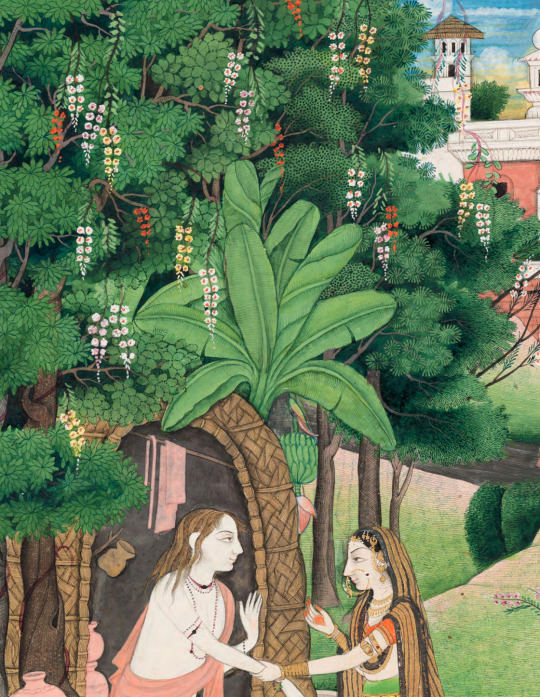
Princesse visitant un ascète, Inde (1820)
#asceticism#ascèse#Art#India#Inde#indian art#Simon Ray antiques#Simon Ray#Jermyn Street#King Street#London#Jermyn#Saint James
19 notes
·
View notes
Text




The abandoned monastery of a vinegar making monk
11 notes
·
View notes
Text

Elder Michael the Blind
#eastern orthodox#orthodox christianity#orthodox#great schema monk#monasticism#asceticism#ancient christianity
34 notes
·
View notes
Text
The path to perfection is the path to the awareness that we are blind, poor, and naked. Inextricably linked with this awareness is contrition of spirit, or pain and sorrow over our uncleanness that we pour out before God, or, what is the same -- ceaseless repentance. Penitential feelings are the signs of true asceticism.
Saint Theophan the Recluse: Path to Salvation; A Manual of Spiritual Transformation
15 notes
·
View notes
Text





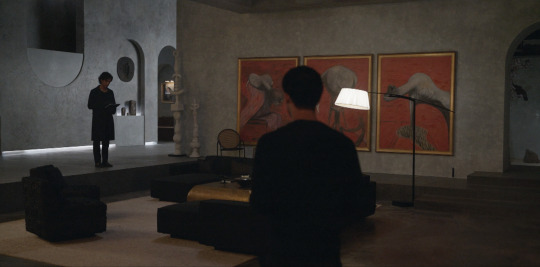
LDPDL, Asceticism + Simone Weil 1/3
Simone Weil Waiting for God | Simone Weil Gravity and Grace | Interview with the Vampire 1 + 4 + 6
St. Louis of the Vieux Carré - Day 3: Penance (@iwtvfanevents)
#ldpdl#iwtv#iwtvfanevents#interview with the vampire#louis de pointe du lac#simone weil#gravity and grace#waiting for god#comparatives#knives#asceticism
49 notes
·
View notes
Note
can you elaborate on “how does anyone not read Luther’s personal and spiritual life and conclude…” ? I mean I knew he was foul-mouthed but ngl say more fam
Okay, the foul-mouthedness and the being really angry and vicious towards his ideological enemies isn't great, but it's not exactly damning either; I can point to a bunch of Catholic saints who were also prone to this kind of behavior. It's just something I personally find very distasteful, and am as embarrassed by Catholic saints who engage in that kind of behavior as I would be of Luther.
But really, the parts that bothered me were twofold.
First, Martin Luther's tendency to try to fill spiritual voids and depressions with physical sensations in his later years; he was a compulsive eater and drinker, for example - he used to call this stuffing himself "fasting," because he would eat to the point of finding disgust (and thus no pleasure) in it. (Which, you know, eating can be an ascetic activity for those who have eating-disorders, but when you're exposing yourself to physical sensations purely to stave off feelings of spiritual inadequacy....). In addition to the overeating, he similarly engaged in outbursts or wrath or sexual behavior in order to distract himself from these thoughts. Call it a major bias towards the monastic ideal if you must, but I am deeply mistrustful of this kind of coping mechanism where you distract yourself by indulging the body.
Second, Martin is on record saying that there were often times that he could not pray without also cursing and damning others. I think that an inability to praise God without also wishing death and destruction of your enemies in the same breath may indicate that something is deeply, deeply wrong. Especially when you combine these statements with other statements that indicate a chronic worry that maybe he wasn't actually right and might have been leading his followers into damnation anyway.
I don't like Luther. And there are aspects of his personality that I actively dislike. But having said that, don't let this post make you think my opinion of the man is just as negative as it was when I first started reading the book; there is some stuff about him and his thought that I liked. He's just also... a lot, and I think a lot of what he had to say or do was questionable.
66 notes
·
View notes
Text

This is the cell of Daniel the Hesychast in the Neamț County. Daniil was a famous ascetic, whom Prince Stephen III the Great (1457-1504) often consulted on matters of both personal salvation and politics.
Situated only one mile away from another historic landmark (Putna Monastery), this place of solitude and prayer was built by a single man, Daniil Sihastrul, that used nothing but a chisel in his quest of being as close to God as possible.
#romania#rural#scenery#landscapes#aesthetic#architecture#stone architecture#stone art#stone house#stone home#cell#asceticism#monastic life#monastery#orthodoxy#orthodox church#orthodox fathers#eastern europe#christianity#chisel
311 notes
·
View notes
